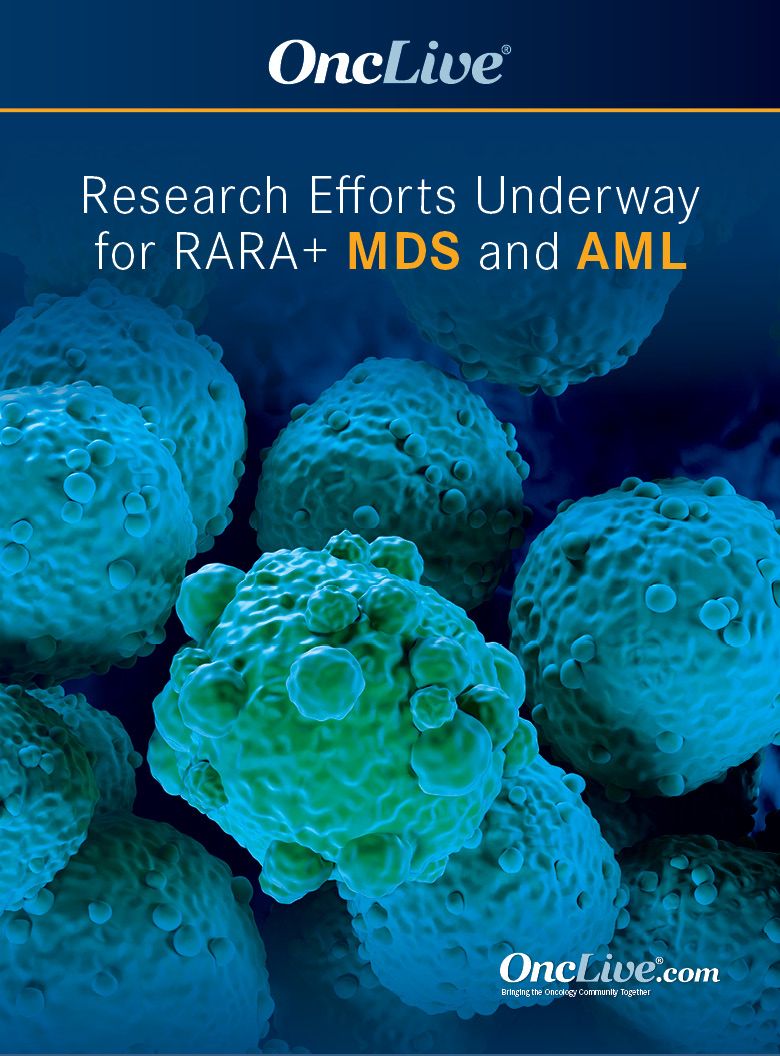Publication
Video
Supplements and Featured Publications
Dr Borthakur on the SELECT MDS-1 Trial in Newly Diagnosed MDS
Author(s):
Gautam Borthakur, MD, discusses the ongoing phase 3 SELECT MDS-1 trial in patients with newly diagnosed myelodysplastic syndromes.
Gautam Borthakur, MD, professor, Department of Leukemia, Division of Cancer Medicine, The University of Texas MD Anderson Cancer Center, discusses the ongoing phase 3 SELECT MDS-1 trial (NCT04797780) in patients with newly diagnosed myelodysplastic syndromes (MDS).
SELECT MDS-1 is evaluating the efficacy of tamibarotene (formerly SY-1425) and azacitidine (Vidaza) vs azacitidine plus placebo in patients whose disease displays Retinoic acid receptor α (RARA)–positive, newly diagnosed, higher-risk MDS.
Tamibarotene is an oral selective RARA agonist. Approximately 50% of patients with MDS patients have RARA overexpression. Previous data from the phase 2 SY-1425-201 trial (NCT02807558) showed that in evaluable patients with RARA-positive MDS or acute myeloid leukemia (n = 18), tamibarotene plus azacitidine elicited an overall response rate (ORR) of 67%, including 9 patients who achieved a complete remission (CR) and 2 who had a CR with incomplete count recovery.
In SELECT MDS-1, patients will be randomly assigned between the 2 treatment arms, and the primary end point of the study is the proportion of patients with a complete remission. Secondary end points include ORR, event-free survival, overall survival, transfusion independence, and safety.
The standard treatment for patients with higher-risk MDS has not moved beyond hypomethylating agents, Borthakur begins. Although other ongoing trials are investigating regimens to improve upon frontline hypomethylating agents, room for improvement still remains, Borthakur notes. Notably, patients who progress on a hypomethylating agents typically have poor outcomes, and part of the focus in the higher-risk MDS space has been on improving treatment options in the frontline setting, Borthakur explains.
Although targeted therapies have been developed for patients with MDS harboring IDH1, IDH2, or FLT3 mutations, significant progress has not been made in developing novel therapies for patients with higher-risk MDS, and the SELECT MDS-1 trial will further investigate the use of tamibarotene for the subset of patients with RARA positivity, Borthakur concludes.










